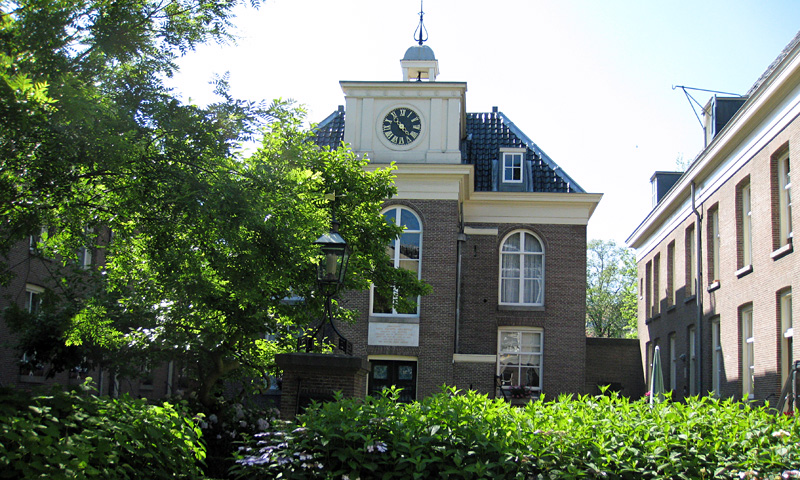Self-guided City Walk Hofjes Hopping in the Jordaan
Hofjes, almshouses, are small cottages built around a central courtyard or lawn. The residents used to be widows of slender means, unmarried women and sometimes couples. Today, the hofjes are very popular places to live.
Most hofjes are freely accessible and most can be found in the Jordaan district. They seem miles away from the hustle and bustle of Amsterdam. These almshouses are sometimes difficult to find because the entrance is an inconspicuous front door.
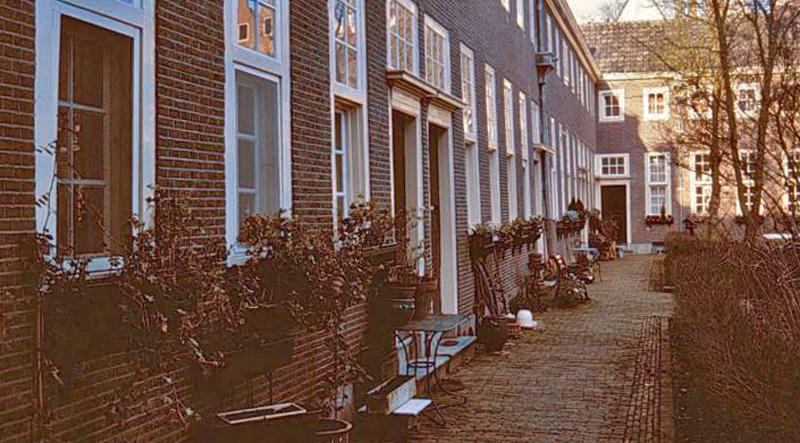
What do Hofjes look like
The first hofjes were built in the seventeenth century. They were founded out of charity by wealthy citizens. However, charity was often not the main reason because the benefactor hoped for a better place in heaven when he gave part of his wealth to the needy.
The lay-out of most hofjes is identical: cottages grouped around a central lawn, a water pump, a privy and a place to do the laundry. Admission policy was strict. The way of life of future residents had to be beyond reproach. Moreover, there were strict house rules: no drinking, no visiting men, home on time and lights out by 10 pm.
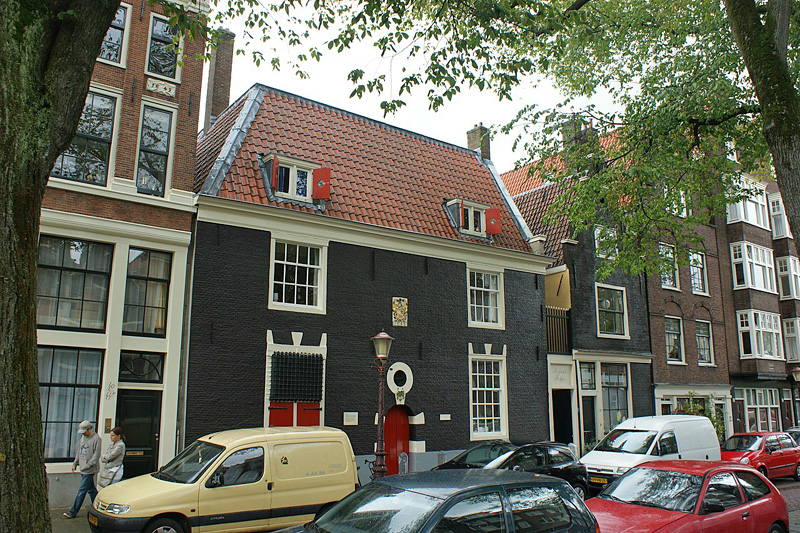
Self-guided City Walk Hofjes Hopping
START: Palmgracht
FINISH: Prinsengracht
1. Directions: this City Walk starts at Palmgracht 28-38, Raepenhofje
Raepenhofje was founded in 1648 by Pieter Adriaansz. Raep, one of the city’s notables. The commemorative plate above the entrance shows a raap (turnip in English) and P A, the initials of the founder. The residents were women members of the Dutch Reformed Church. They did not pay rent and received 25 baskets of peat every year. In the 1950s the cottages were renovated and kitchens and private toilets were added. Nowadays, female students live here. They are allowed to stay after graduation but are not allowed to bring in their boyfriend permanently.
2. Directions: Keep het Raepenhofje on your left and walk down Palmgracht. Turn right. You are now on Brouwersgracht. The fourth street on the right is Lindengracht 147-165 Suykerhofje
Suyckerhofje was built in 1667 and takes its name from the founder Pieter Janszoon Suyckerhoff. The residents in this hofje were Protestant widows of fifty years and older who paid no rent and received a contribution for peat and food. They had to live according to the rules and regulations which meant no visitors after 10 pm, and certainly no male visitors, church attendance on Sundays were only some of the rules. They were only allowed to come and live here if they had proof of good conduct from the church authority and they had to hand over their possessions and savings. Originally there were nineteen small houses, today there are fifteen slighter lager ones. Each home now has its own bathroom and toilet.
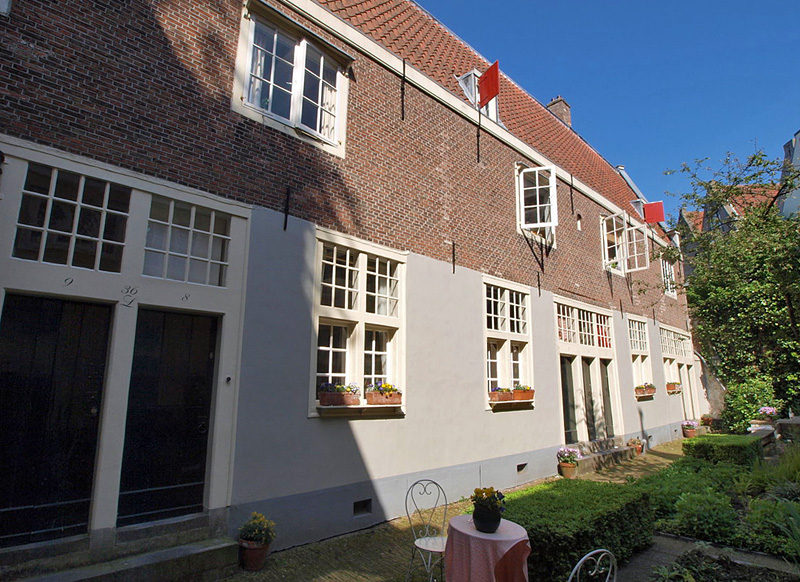
3. Directons: Walk back to Brouwersgracht, turn right and then immediately right again, you are now on Prinsengracht 89-113, Starhofje also named van Brienenhofje.
The history of this hofje begins in 1797, when Arnaut van Brienen bought the adjacent house, warehouse and beer brewery called ‘De Star’, and then demolished it and built a hofje. The name of the former beer brewery is reflected in the name: Van Brienen’s Gesticht Hofje ‘De Star’.
The residents were twenty Roman Catholic elderly couples and six men. The houses had two floors. The ground floors was for living and the upper floors were rented out as grain lofts, the money received was used for the maintenance of the hofje. If, after deduction of expenses any money was left, the residents received benefits in kind such as peat, bread, butter, cheese and potatoes. At the end of the nineteenth century, the grain lofts had fallen into disuse, and were converted into six double rooms.
Today’s residents are men, women, married and unmarried over the age of 45 and being Catholic is no longer a requirement. The former bleaching field is a now a landscaped garden with trees and flowers and in the middle a water pump with a natural stone cover and above it a wrought iron lantern.
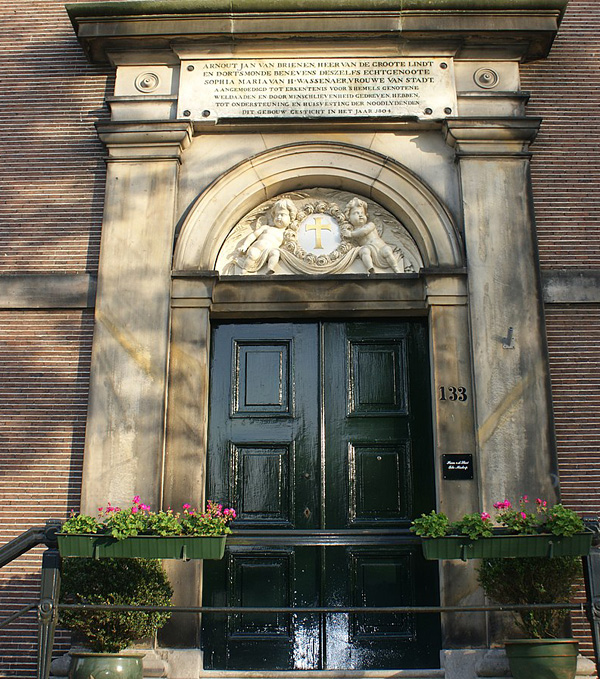
4. Directions: continue walking along the canal until you get to Prinsengracht 159-171, Zon’s Hofje
Zon’s Hofje, also known as De Arcke Noach, was founded in 1765. Protestant women aged fifty and older lived here. This was a very luxurious hofje, with two-storey houses. The houses on the ground floor had their own cellar and their own entrance door. The houses on the first floor, with a drying attic and a peat shed, had a communal entrance. All houses had box beds.
5. Directions: continue along the canal until you get to Prinsengracht 855-899, Deutzenhofje
Deutzenhofje was founded in 1694 and inhabited by servants of the wealthy merchants who lived in the opulent canal houses. Poor relatives of rich merchants also lived in this hofje. This hofje is easy to find – two monumental houses on the Prinsengracht with a gate in the middle as an entrance. The houses in this hofje had one room, an attic and a cellar. In addition to free accommodation, the residents received forty baskets of peat, two cheeses and twenty pounds of butter, rice and candles every year.
END OF THE WALK
More city walks
Guided city walk along highlights of Amsterdam
Next article: Best Street Markets in Amsterdam
Previous article: Rent a Bike and Go Dutch
